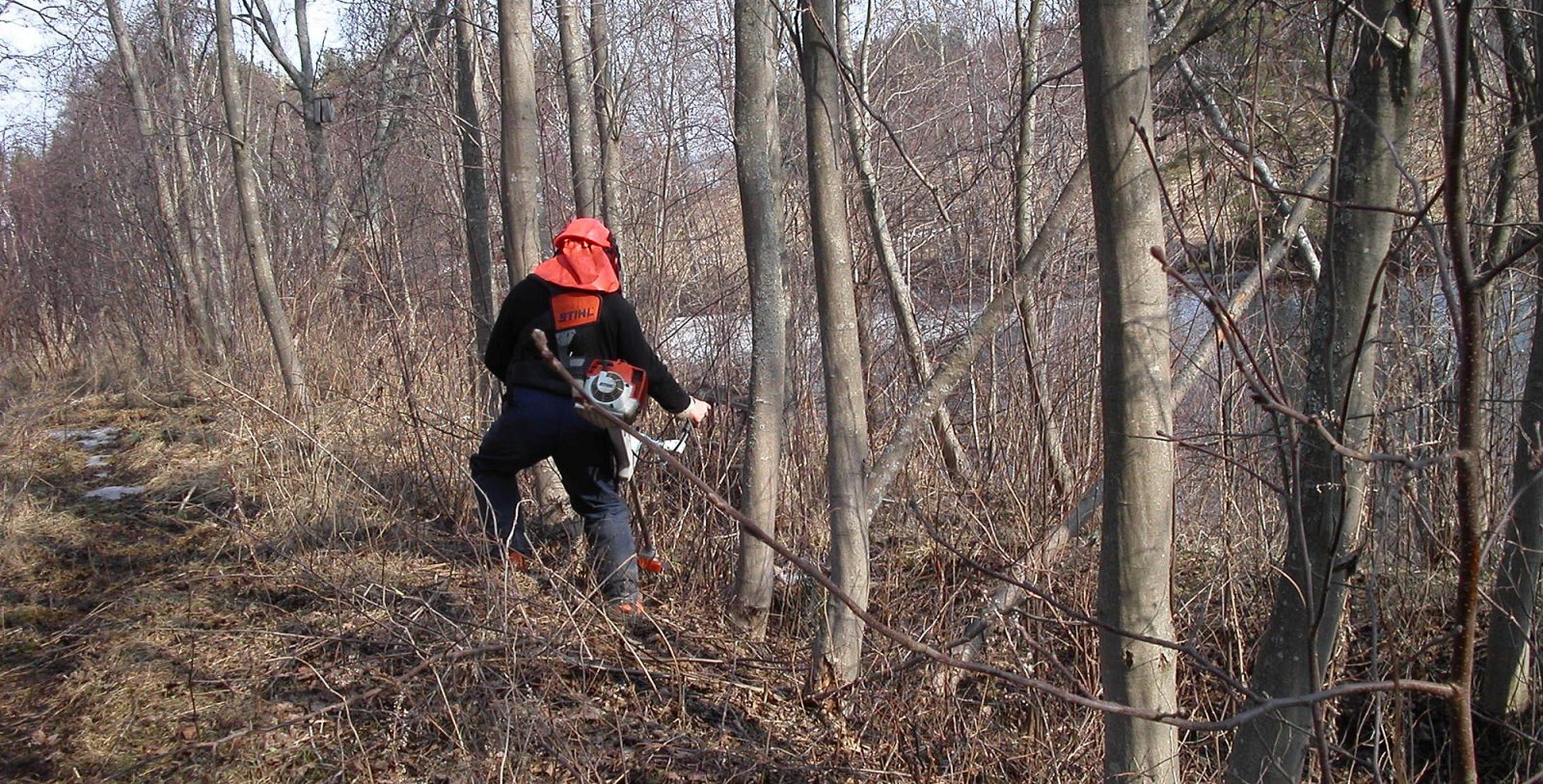
Forest use and archaeological entities
The protection of archaeological entities and forest use can usually co-occur through relatively small arrangements. The Finnish Forest Centre will automatically issue a notification of forest use to the museum authorities if the intended forest use is to take place within 200 metres of an entity listed in the Ancient Relics Register.
In addition to the ancient relics, the Ancient Relics Register includes other cultural heritage entities that often, due to their age, are not governed by the Antiquities Act. However, these entities are also reminders of the life and forest-related activities of previous generations and therefore worth preserving. The recommendation with these entities is to have a similar approach as with stationary relics. Based on a notification issued by the Forest Centre, the submitter of the notification of forest use will receive a statement describing the status of the entity (a relic or other type of cultural heritage entity), its type and location data specified on a map, and case-specific instructions on forest use.
Planning forestry work
Even if the relic itself is protected, land use, including forestry, is allowed in its surroundings. Forestry work must, however, take any relics in the area into account, and this requirement is also included in both forest certification criteria (PEFC and FSC). In the optimal situation, the relics are listed in the property’s forestry plan similarly to other entities that promote forest diversity. Ancient relic locations are often small, and taking them into account when conducting forestry work will not involve an unreasonable amount of money or effort. Typically, forestry measures promote the preservation of an archaeological entity.
The location of a relic must always be marked before beginning the work by using ribbons, for example. It must also be ensured that everyone operating in the area is aware of the entity and its location. Updated information on the ancient relics’ locations can be found in the Ancient Relics Register of the Finnish Heritage Agency. Even if the operator planning tree felling has updated information on ancient relics, detecting the site or marking it off might require assistance from an expert. The archaeologists at the Finnish Heritage Agency or the nearest provincial museum may be contacted if, during the planning phase for tree felling, it becomes apparent that there are ancient relics or suspected ancient relics present in the regeneration area. Often a simple phone call is sufficient to find out what type of measures are possible in the area and if a joint field review is required. If the intention is only to thin the tree stock, contacting the authorities is not absolutely necessary, so long as the driving tracks are planned carefully and no visible structures are harmed.
An ancient relic must not be covered
Thinning the tree stock usually has a positive effect on a relic. When the relic’s surroundings become less overgrown, the entity becomes more visible and its preservation easier. During a thinning, all trees above the relic and in its immediate vicinity should be removed.
New trees should also not be allowed to grow in the structures. A relic is easier to preserve during the tending phase of seedlings and later on if the location is kept free of trees to allow for it to be clearly visible amidst the rest of the landscape.
Timber must always be stored away from the relic and the logging waste should be removed from the structures and their immediate surroundings, even with thinnings.
The soil surface and structures must not be broken
Felling trees in an ancient relic site should be done in the winter, especially if the ground is unstable. Certain ancient relic sites are particularly vulnerable to damage, in which case hiring a professional logger is recommended. In these instances, it might also be necessary to cover the driving tracks with branches and tree crowns or to remove the felled trees with a winch tractor. Driving over the structures is prohibited even when the ground is frozen or covered by snow.
The majority of damage on ancient relics caused by forestry occurs while reshaping the ground with a machine. In fact, ground shaping will result in the partial, and occasionally even complete, destruction of an entity. Entities located underground pose a challenge, because marking off a protected area and providing instructions on its reshaping without conducting a prior survey is often not possible. Typically even the visible signs will not provide a reliable understanding of the true size of the relic. Furthermore, a single entity may include a variety of relic types so that, for example, the areas between cairns can contain an underground dwelling. Therefore, reshaping the ground with a machine is prohibited in ancient relic sites.
If the regeneration area has isolated cairns, a tar-burning pit or a similar small relic, the areas near them may, of course, undergo reshaping. However, the safest course of action is to leave a wide untouched area around the entity, following the contours of the terrain. Removing tree stumps is also extremely damaging to relics. Therefore, these removals are not allowed in or near ancient relic sites. A controlled burning is possible in the regeneration area, provided that the relic will remain undamaged.
Consider your options
Due to the restrictions regarding regeneration, the use of the so-called continuous grow methods are recommended in ancient relic sites and their immediate surroundings to avoid ground reshaping done with machines. The other option is to use special logging methods, which will extend the forest’s renewal time. Special logging methods are suitable for the area, support its landscape and recreational values, and are included in the new forest regeneration instructions of the Forest Act (1093/1996, amendment 1085/2013).